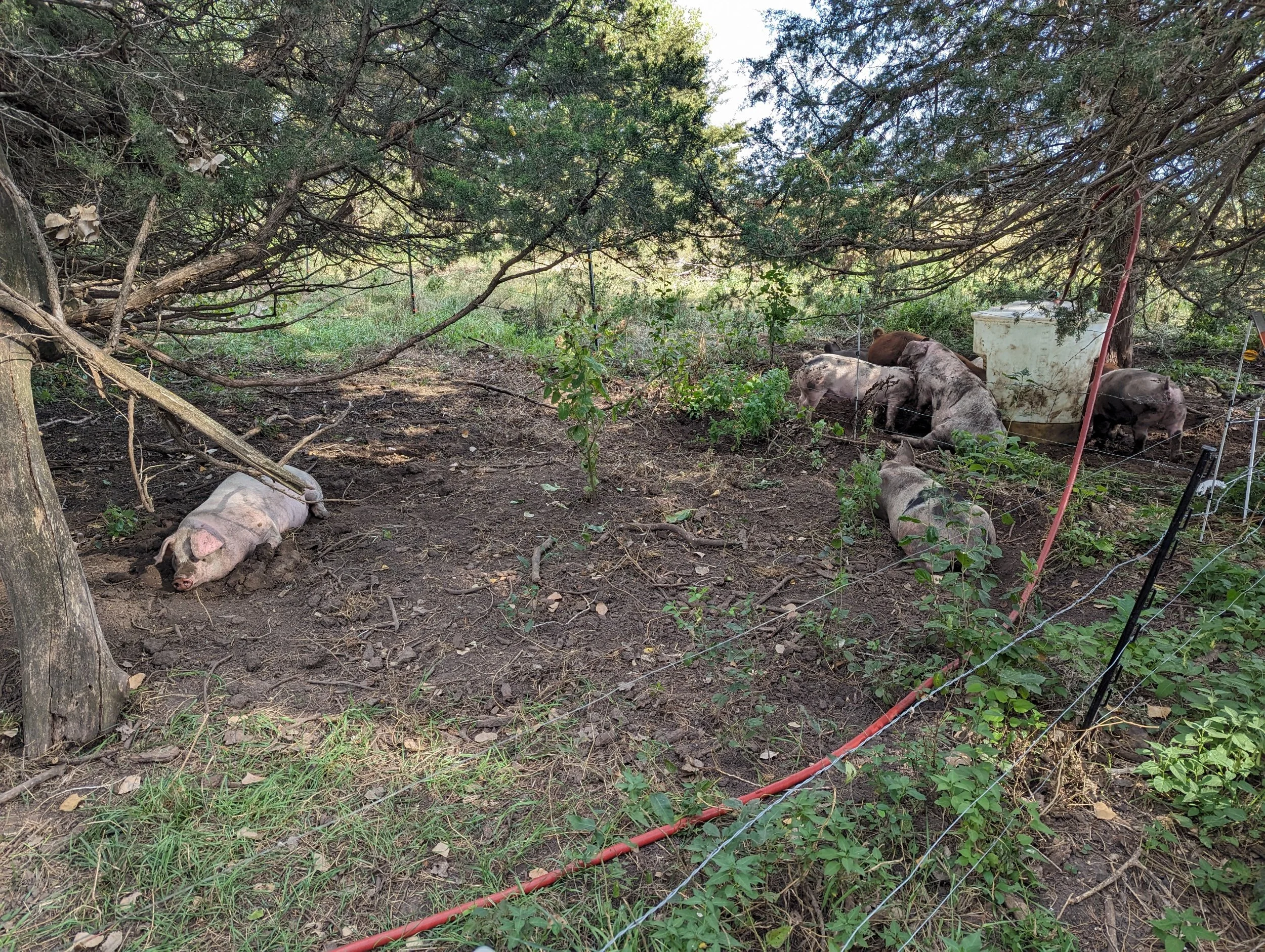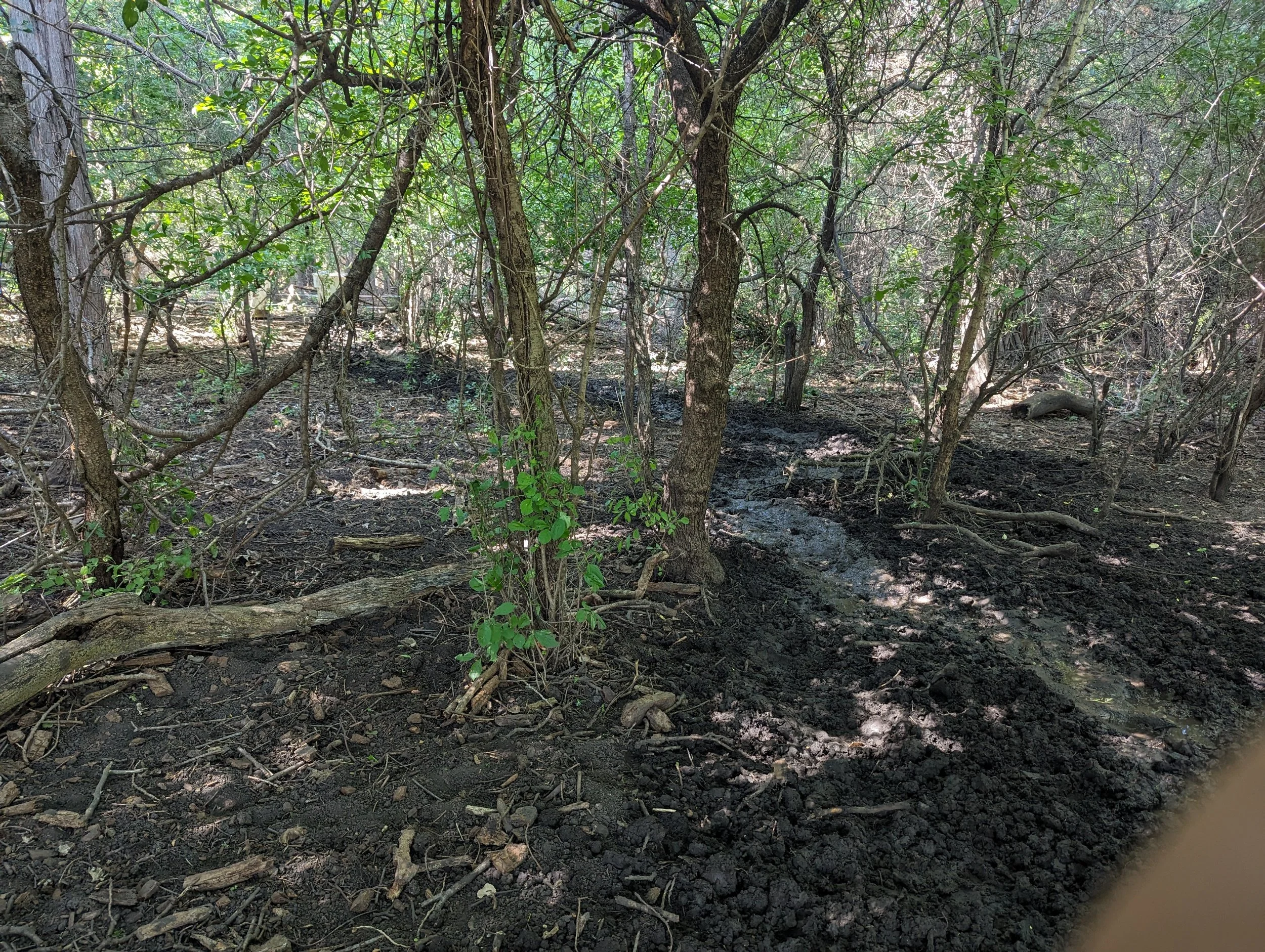Ruminations 24-02: Pastured Pork: Commentary 2
Last week we introduced a video into the Toomey-sphere from the guys at This’ll Do Farm and the Barn Talk Podcast explaining the reasons why hog barns are needed and outdoor hogs are not as great as folks think they are. We discussed skin sensitivity last week. This week lets discuss their second concern: Erosion.
#2: Soil Erosion, Rooting,
and Soil health
Of all the concerns, this is the one I genuinely agree with the most. You can put lipstick on a hog, but they’re still a hog. Those noses are genetically designed as shovels and all their rooting is the reason that pork shoulder is the some of the toughest roasts and meat you can get (which by the way makes them perfect for smoking!). This is where management of the hogs, specifically time on pasture, comes into play.
The above photo was taken the day before a move. You can see the hogs created a pretty nice wallow and bare spot around their waterer, mainly to cool off, also because they’re hogs. Now this rooting ability can create holes and start head cuts and gullies. If I were to leave hogs in this area for the 6 months I had them, I would certainly have an erosive mess on my hands. There is a massive difference to “outside hogs” and “pasture raised” hogs. On average I leave my hogs in a pasture for 7 days, then move them. I move them quicker if I need to. The photo below this shows a stream of water from the waterer (they rubbed and bumped the float crooked and it ran constantly for two days) and their wallowing where the water collected below at the base of the hill. They were moved next day.
Waterer leak and hog wallows…
NOW WE’RE FARMING!!
Don’t get me wrong, I was not happy with this situation, but this is where the farm management plan comes into play. The hog pastures in this blog are not having hogs on them again for another 2-5 years. This erosion and rooting will not only have time to heal, but has also woke up the soil biology to stimulate growth.
Below is paddock #1 from 2023. There was nothing in this paddock from June 27th to September 1, roughly 60 days. Any rooting that the hogs did in this paddock was healed by the next use. Again, hogs are not going to be back in this paddock for at least another 3 years.



Another issue that I take to saying hogs outside cause more erosion than inside comes from the mitigation of resource concerns caused by confinement hogs. All that manure goes somewhere. Utilizing animal manure as a fertilizer for crops is a practice as old as time. The scale of the scat removal is what have changed.
Forget about water contamination or biohazards for a second and just focus on soil erosion and health. Most hog barns knife their waste products into the soil before the ground freezes. This method of manure spreading involves injecting the manure slurry in the ground between creasers that cut open and seal up the soil. Overall not a bad concept. Last year, my 15 hogs were on a total of 1.5 acres of land. One hog barn could be knifing manure on 100’s if not 1000’s of acres of cropland. The issue comes a year or two later (or every year at the entrance to a field) where the farmer has to deep rip or conduct several passes of tillage to mitigate the compaction caused by driving all the manure all over the place. Now I would ask the question to you: Does a .02 ac wallow, water leak, or rooting patch, every 2-5 years erode more soil than tillage on lets call it 100 acres every other year? (I’m specifically looking at tillage to release the compaction of soils here.) You be the judge.
Next week I will take a look at topic number 3 from the video: Parasites.


